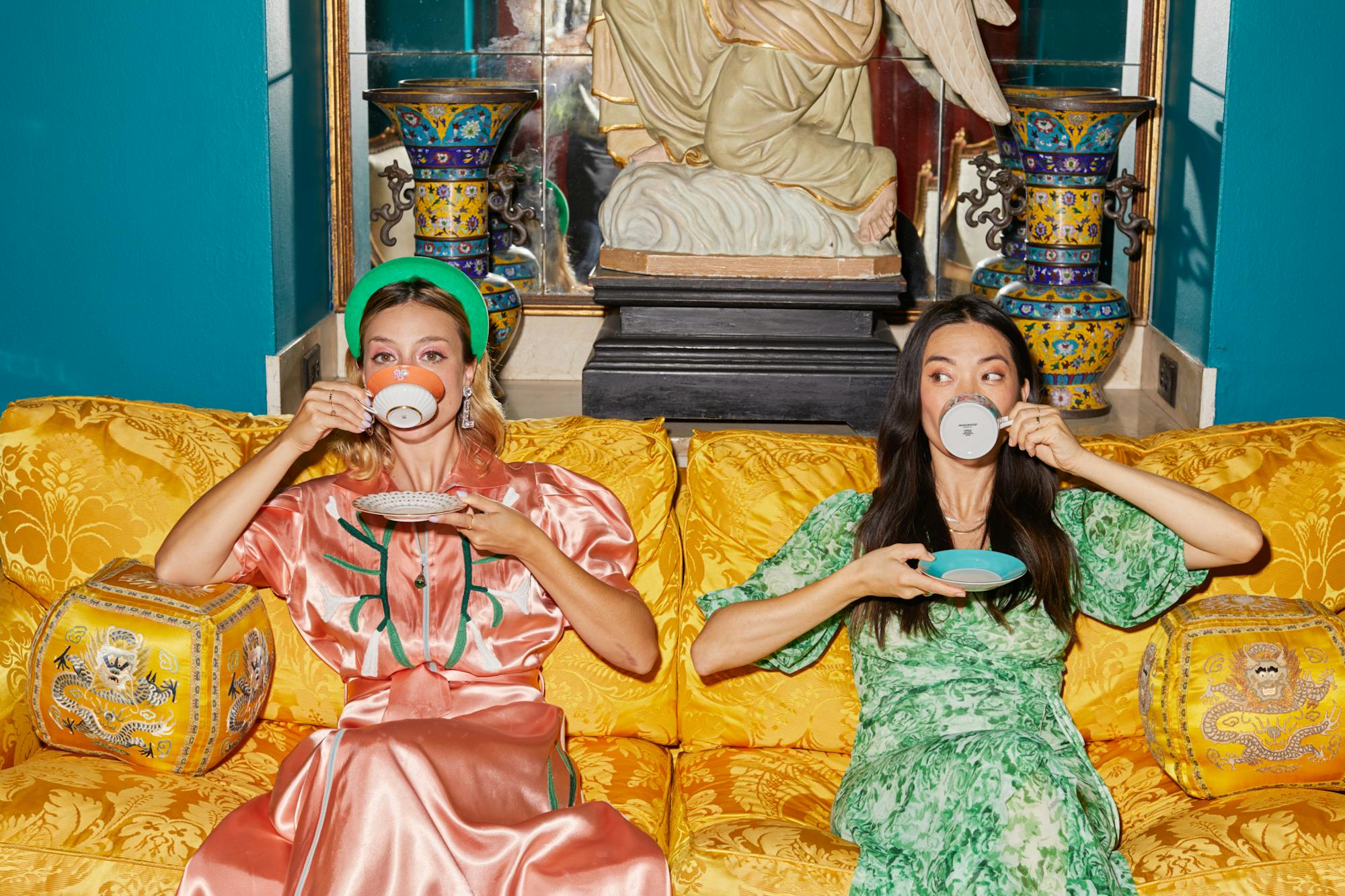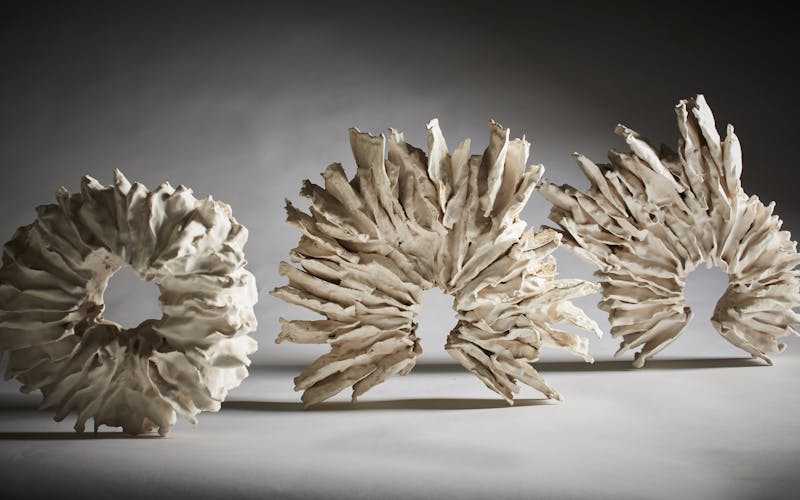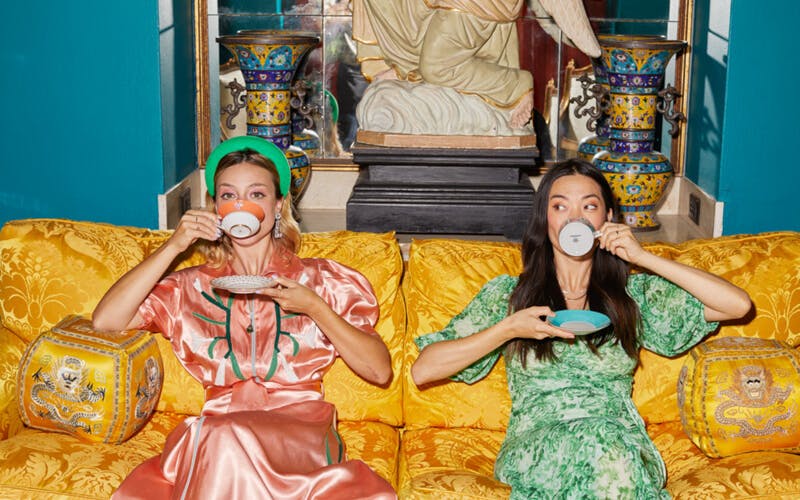

for Walpole members and
non-members available now
at The Londoner



On a sunny, spring day I’m sitting on my front step at home in Sheffield, tasked with taking the long view on luxury and culture over the centuries. With thinking beyond the particularity — and the platitudes — of the pandemic. My pen is poised over a handmade Italian notepad my boyfriend had given me as a keepsake. I take another sip of strong coffee from a Wedgwood cup with a glaring, campy pattern. It’s a rococo-inspired design I hold dear, if with a dash of irony. Such a scene of life (still) in lockdown seems a world apart from the boutiques and venues I was able to visit when making the BBC radio documentary, The Deluxe Edition, a couple of years ago — a programme in which I’d wanted to understand the allure of the luxurious. Historically, the past year has been unlike any other. But in other respects, there are surprising similarities with the age that shaped our modern luxury consumer culture across Europe: the late-18th and early-19th centuries.
That era gave rise to the word ‘keepsake’; the term ‘de luxe’ made its way from French into other European languages; and Wedgwood’s wares were marketed to popular acclaim here in Britain, on the continent and further afield. Around 1800, luxuries were defined as pleasures, conveniences and curiosities. For enthusiasts, they enabled the expression of individual personality and the progress of civilisation. In other words, the self and society were projected on to material things like never before. Forget the grandeur of the world at large, luxury objects were often exquisitely crafted in miniature and were for the most part made for the body and the home. For the delight of others about town or as invited guests, yet also for one’s own enjoyment behind closed doors. People bought watches, glamorous postiches, linen garments, high-quality paper (though at this point made from old rags), pieces of furniture, and porcelain or glazed pottery for the table. The success of luxury in the emotional and domestic domains, giving character to ourselves within our own four walls, strikes a chord with present-day lockdown living.
Back then, material mania was evident in a tea or coffee service, for example. The kings of Poland, France and Naples, not to mention many petty German princes, set up or sponsored porcelain factories in the 18th century. Their subjects were loyal customers. A little later, Britain’s Josiah Wedgwood made his name — and money — with entrepreneurial pottery. He secured royal patronage, at home and abroad, and his products took the European middle classes by storm. But it’s easy to misinterpret luxury, then as now, as necessarily a top-down trend. Critics have long made this interpretative mistake. In the late-19th century, Norwegian-American theorist Thorstein Veblen was despondent that the proletarian revolution he hoped for would never materialise, because he thought luxury products and fashion aped aristocratic taste. As ever, the truth is more complex. When luxury went mainstream in the late-18th century, its influence didn’t travel in only one direction. Marie Antoinette no less, perhaps the person most vilified for her supposed profligacy and exclusive mindset, sent her hairdresser into other Parisian boudoirs so that her own style would be trendsetting — but still in line with the what the chattering classes were already talking about.
Modern luxury is not only because of the rich, nor is it just for the rich. Though its value relies on such rhetoric. Luxury doesn’t boom only because of the bourgeoise, either. Adam Smith may have meant that the less well-off benefit from the general effects of a liberal economy when he wrote of “universal opulence that extends itself to the lowest ranks of society”. But at the outset of consumer capitalism, the working poor themselves participated in luxury culture, albeit to a smaller extent (and more in urban areas than in the countryside). In 1700, average French servants spent ten per cent of their earnings on clothes. By 1780, they splurged around a third, though their wages did not rise much. They actually bought little, investing instead in select, expensive items, complementing a showy watch or a coffee pot, if not the matching cups and saucers. That most can have some purchase on luxury living, perhaps focusing on a few objects for ourselves or — especially during lockdowns — for the home is a maxim that continues into today. Even in a pandemic, perhaps also because we redirect money from previous areas of expenditure.
The ways in which material things were all stored around 1800 explains the shift in social structures that wasn’t a simple division into upper and lower classes, and in which labour became ever-more specialised. Palaces, townhouses and some farmsteads were cluttered with new stuff, and some objects helped consumers to sort or think through their lives. If the old order and aristocratic power was represented by a vertical wardrobe, the peasant and working classes once packed everything into indiscriminate chests that held all and sundry. Just as the modern taste in furniture wasn’t necessarily top-down or generic, nor was the furniture itself. Increasingly, chests of drawers became luxury items around 1800 across the social spectrum. These pieces of furniture had a new, compartmentalising function with discrete sections, sometimes in parallel with each other, at others above one another. They stood in for the organisation of society in miniature, which had split into ever-more sub-groups.
Hence luxury objects in the late-18th and early-19th centuries also brought philosophy, the fine arts and history into the home. One sign of domestic fine taste was hung paper instead of plastered wall coverings. The German philosopher Kant even elevated wallpaper with leafy squiggles to the status of pure, free beauty in his third critique — alongside parrots, flowers and creatures of the sea. Luxury interior design was theorised together with nature, as examples of empty phenomena that created space for aesthetic sensibility and abstract reflection. In contrast, Wedgwood promoted the view in his catalogue from 1787 that pottery was ‘contentful’ — and in more ways than an item’s intended, practical use. His “copies of fine works, in beautiful and durable materials” — that is to say, replica images of the classics — apparently had the same effect for the arts as the printing press had for literature and the sciences. Material things mediated history and educated people, reducing ignorance and barbarity, so Wedgwood claimed, pot by pot. So much for the presumed aura of original artworks, which, later critics like Walter Benjamin lamented, was destroyed in the modern age capable of technical reproduction.
Irrespective of whether luxury could also be intellectual(ised). Wedgwood tea sets designed by Lady Templeton in the 1780s were inspired by fiction, such as Goethe’s novel The Sufferings of Young Werther. The Austrian author Karoline Pichler wrote a poem praising Wedgwood tableware, which she’d received as a gift. And the romantic Novalis, another German, gave Goethe the back-handed compliment that he had achieved within German literature what Wedgwood accomplished in English arts and manufactures. It’s a comparison that made its way into a political speech of 1863 by William Gladstone, who as British Chancellor of the Exchequer understood it as a celebration of two, similarly exemplary men. Pottery was art, it was the muse for art, and was a means of disseminating and making sense of art — and society.
Although luxury goes hand in hand with the Enlightenment, self-expression, with liberalism and arguably also domestic bliss, it is of course contested as well. At certain moments in time, luxury is especially controversial. After the French Revolution, at the turn of the 19th century, there was not so much a concern about whether people could afford luxuries — but rather whether luxuries might impoverish them. Equality was at stake, not least for those involved in the production of luxury objects (as free, or as enslaved peoples). In 1805, the early socialist thinker Charles Hall objected that when the poor produced luxuries such as pottery or jewellery, they were robbed of valuable labour time that they could have spent tending their own land. Fast forward more than two centuries, and the coronavirus pandemic has proved to be another politicised epoch for material pleasures. In early 2020, resorts in the Austrian alps were said to hide Covid-19 cases; in the salubrious suburbs of Connecticut, a soirée was reported to have been a ‘superspreader’ event. These stories may or may not be borne out by fact or, indeed, epidemiology. But the idea that upscale splurges lead to the downfall of society is a popular narrative with a notorious heritage. It’s applied — sometimes erringly — to the end of the Roman Empire, the Dutch Golden Age or the French monarchy.
Last spring, the billionaire David Geffen may have sparked outrage or open-mouthed disbelief for posting an idyllic shot of his superyacht on Instagram, when the world first went into lockdown. The sentiment that accompanied the sunset in his isolated, Caribbean spot expressed a hope that everyone was staying safe. The tone was tactless, even by the standards of lines attributed to Marie Antoinette. But behind the social media story and main headlines, there’s a broader point about how the pandemic has panned out. Our luxury experiences have since retreated to our living spaces. Our homes may feel like islands, if not floating palaces.
And while luxury purchases have always been about the affects, a global pandemic has heightened our emotions and brought us closer to the power of the natural world. Amid the earlier political upheaval of the era around 1800, the author Jean Paul sought to redefine the very meaning of luxury. He extolled a “luxury of enjoyment” over mere “furnishing luxury”. Opulence was the sun shining into the soul, not ostentatious decor brightening a room. Material splendour instead could become a state of mind, he thought. More than two centuries on, and whenever we look towards the future, history can be instructive. Post-pandemic, we may well return to the roaring 1920s. To my mind, though, a more utilitarian, understated, still pretty domestic and perhaps sentimental idea of luxury lies ahead. In that case, I’ll be ordering another Wedgwood coffee cup.
This article first appeared in the Walpole Book of British Luxury 2021. Dr Seán Williams is senior lecturer in German and European Cultural History at the University of Sheffield.





